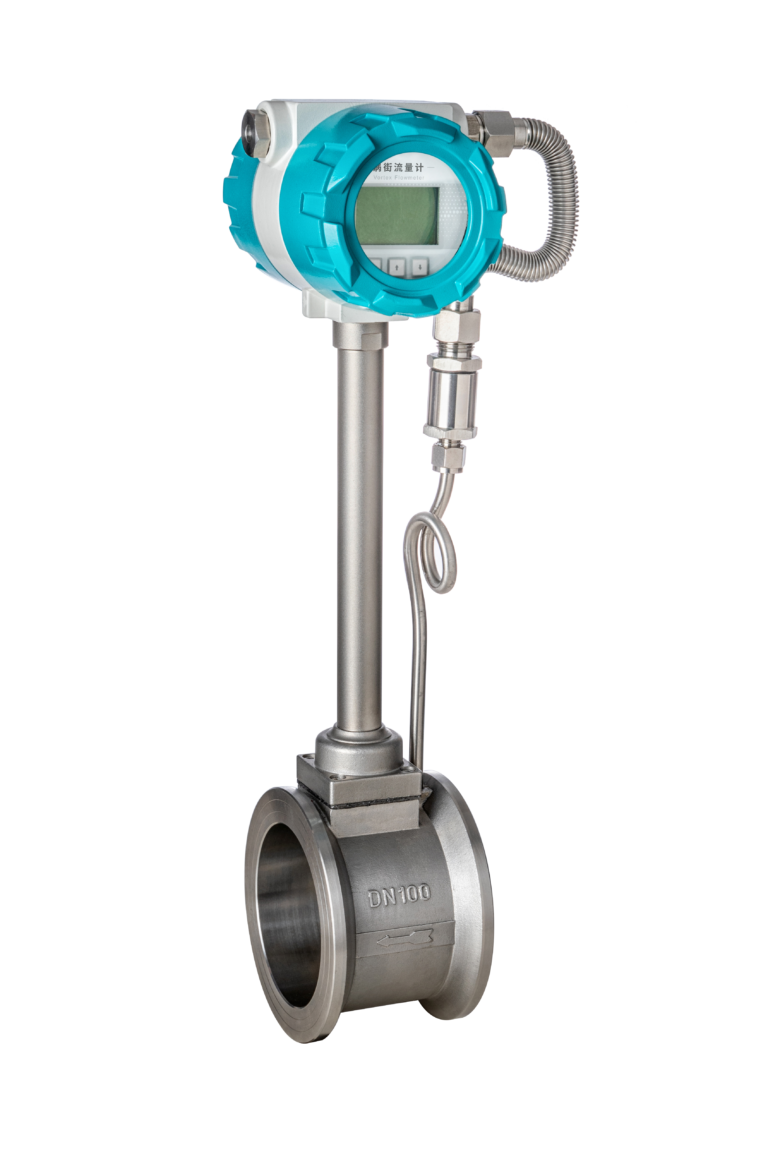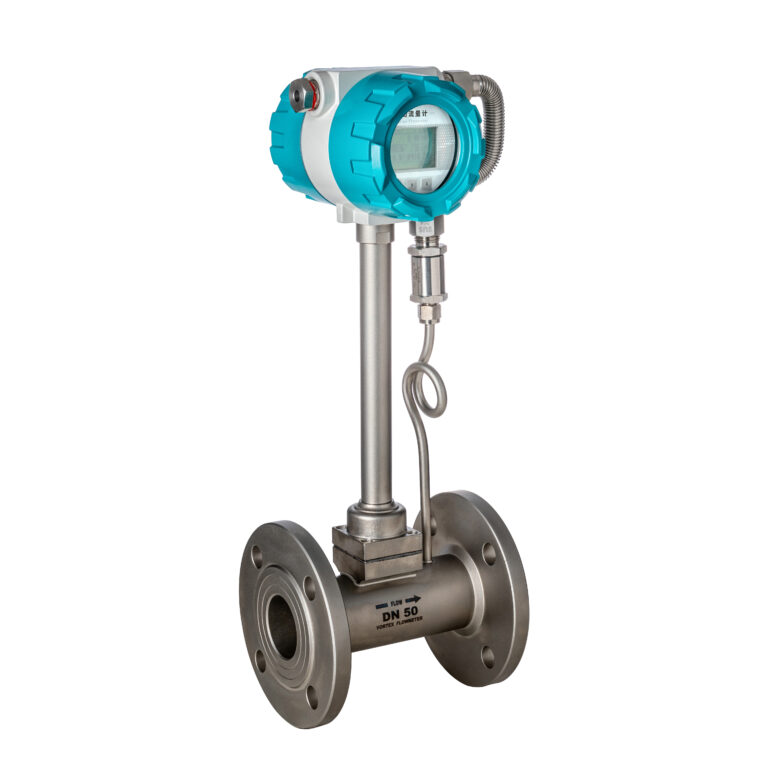In industrial production, accurate measurement of steam flow is crucial for ensuring the stability and efficiency of the production process.
Currently, the most commonly used methods for steam measurement are vortex flowmeters and differential pressure flowmeters. In practical applications, temperature and pressure compensation is an essential step to enhance the accuracy and reliability of these measurements.

Why is Temperature and Pressure Compensation Needed?
Temperature and pressure compensation is necessary because steam flow measurement is typically affected by variations in temperature and pressure. Steam is a compressible fluid, and its density changes with fluctuations in temperature and pressure. Without temperature and pressure compensation, the volumetric flow data measured by the flowmeter may be inaccurate, leading to incorrect assessments of the actual mass flow rate.
Specifically, changes in steam temperature and pressure result in changes in its density. For example, under the same volume, as the temperature increases or the pressure decreases, the steam’s density decreases. Without temperature and pressure compensation, the flowmeter might overestimate or underestimate the actual steam flow, impacting the stability and efficiency of the production process. Therefore, to ensure accurate measurements, especially in industrial applications where precise steam control is required, temperature and pressure compensation is essential.

How to Implement Temperature and Pressure Compensation?
Implementing temperature and pressure compensation in steam flow measurement involves several key steps to ensure accurate and reliable data:
Measurement of Temperature and Pressure:
- Install sensors to continuously monitor the temperature and pressure of the steam. These sensors typically include temperature sensors (such as thermocouples or resistance temperature detectors) and pressure transmitters.
Real-Time Data Integration:
- The flowmeter needs to integrate real-time data from the temperature and pressure sensors. Modern flowmeters, like vortex or differential pressure flowmeters, often have built-in capability to receive and process these inputs.
Compensation Algorithms:
- Use specific compensation algorithms or formulas that adjust the flow measurement based on the detected temperature and pressure. The formulas are designed to account for the changes in steam density caused by these variations.
- For example, the ideal gas law or steam tables may be used to calculate the actual density of the steam based on the measured temperature and pressure.
Flow Computation:
- The flowmeter computes the mass flow rate by applying the compensation formulas. The mass flow rate is more accurate than the volumetric flow rate since it reflects the true amount of steam flowing through the system, accounting for density changes.
Calibration and Adjustment:
- Regularly calibrate the flowmeter and sensors to ensure the compensation remains accurate over time. Calibration helps to adjust for any drift in sensor accuracy or changes in system conditions.
Monitoring and Maintenance:
- Continuously monitor the system to ensure that the temperature and pressure compensation is functioning correctly. Maintenance may include checking the sensors, flowmeter, and any connected systems to ensure they are all working properly.
By following these steps, temperature and pressure compensation can be effectively implemented, leading to more accurate steam flow measurements and improved process control in industrial applications.

In summary, the temperature and pressure compensation formula for saturated steam is an important tool based on the physical properties of saturated steam.
It helps eliminate flow measurement errors caused by changes in temperature and pressure. To ensure the accuracy of measurement results, regular calibration and maintenance of the flowmeter, pressure transmitters, temperature sensors, and flow totalizers are required.
